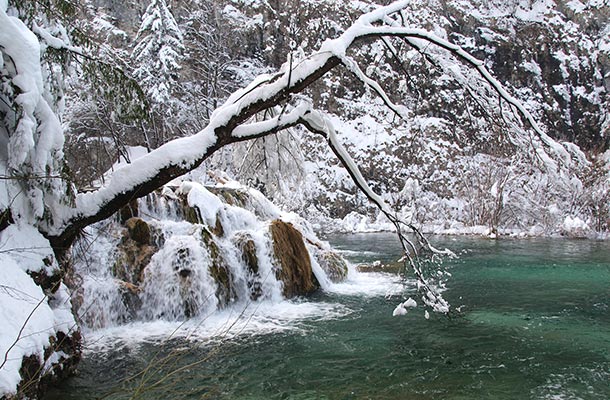Sun Safety Essential Tips: How to Beat the Burn
Medical expert, Dr. Erik McLaughlin MD, talks through sun safety, skin protection and burn treatment for your summer vacation or ski holiday.
 Photo © iStock/letty17
Photo © iStock/letty17
A little bit of preparation and precaution will prevent your skin from becoming sunburned and leaving you feeling uncomfortable on your sunny holiday.
- How sunburn occurs
- Sunscreen tips
- How to apply sunscreen
- Sunscreen ingredients
- Wear sun-protective clothing
- Treating sunburn
How sunburn occurs
The main cause of sunburn is not the sun itself but the ultraviolet energy. Just to complicate matters, there are three main types of ultraviolet (UV) energy, designated A, B and C. Erythema is what your skin gets after a day in the sun, which is redness, some slight swelling and pain.
Doses of UV energy and its effect on the skin are measured in units called minimal erythema doses (MED). This MED represents the smallest dose of UV energy to cause that "sunburn" appearance.
Beachgoers are typically exposed to 15 MEDs of UVB and 4-5 MEDs of UVA. Almost all of UVC is absorbed by the Earth's atmosphere. There is increasing evidence that shows both UVA and UVB can be harmful to human skin and both can cause skin cancers.
UVA rays penetrate the skin more deeply and are largely the cause of aged skin and wrinkles. UVB is generally responsible for most "sunburn" effects and has traditionally been thought of as the cause of most skin cancers.
Ideally, everyone spending time in the sun should use a broad-spectrum sunscreen that protects against both UVA and UVB rays.
Sunscreen tips
Sun protection factor (SPF) is the ability of a sunscreen to protect skin from ultraviolet-induced erythemas (sunburn).
This SPF number is calculated based on the length of time it takes to cause one MED in protected versus non-protected skin.
Basically, SPF is the amount of time it takes to cause a sunburn in someone with sunscreen protection versus someone who is unprotected.
At present, most sunscreens protect largely against UVB only, although there are some products that are beginning to protect against both UVA and UVB.
SPF: % UVB absorption
2 50.0
4 75.0
8 87.5
15 93.3
30 96.7
50 98.0
Clearly, one can see that UVB protection increases with the higher SPF and the use of SPF 30 is becoming more and more advised.
How to apply sunscreen
- Apply liberally to all areas of exposed skin including backs of hands, underside of arms, ears, nose, face, and tops of feet
- Apply 15-30 minutes before swimming or water exposure
- Reapply immediately after exiting the water
- Research indicates that using DEET-based insect repellents in combination with sunscreen can reduce the sunscreen's effectiveness by approximately 33%.
Sunscreen ingredients
The ideal sunscreen spreads onto your skin easy, does not cause allergy or pimples, and does not stain clothing.
PABA (para-aminobenzoic acid) is the most common cause of sunscreen dermatitis and affects 4% of people.
Creams and lotions spread on the skin well.
Oils spread very easily but may cause pimples.
For extreme conditions, a wax or ointment will help resist skin chapping.
Aerosols are often wasteful and leave parts of the skin over-coated and others under-protected due to difficulty in ensuring even spray.
Watch out for oxybenzone and octinoxate, which are now restricted in some regions due to their effects on marine ecosystems.
Wear sun-protective clothing
Clothing that has been tested and proven to block UV energy is designated by the term ultraviolet protection factor (UPF) which is identical to SPF for sunscreen.
The tightness of the fabric's weave is most important in determining how effective it will be in blocking UV energy. A good example of this is Lycra which can block nearly 100% of UVR when relaxed but only 2% when stretched tight. A typical white cotton t-shirt has a UPF of about 5-9.
Wide-brimmed hats are especially good for protecting the face, head, and ears.
Sunglasses should be labeled to protect against UV energy and side shields do work in decreasing the amount of UV absorbed by the eyes.
Treating sunburn
Sunburns are largely self-limiting and will typically resolve on their own.
Treatment is largely centered on relieving symptoms. Skin moisturizers and cool compress or cool water baths may help decrease the pain.
There is little evidence to suggest traditional treatments such as baking soda, aloe, and oatmeal are effective pain relief but there is also a lack of decent studies.
Oral pain control can be achieved with either aspirin, acetaminophen, or Ibuprofen.
After a day in the sun, dehydration is also a factor and adequate water intake should also be assured.



No Comments